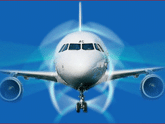According to Airbus’ latest Global Market Forecast (GMF), between 2011 and 2030, carriers in Australia, New Zealand and the Pacific Islands region will require 736 new passenger and freighter aircraft (above 100 seats) valued at US$98 billion.
The region’s close links to emerging economies are the main contributor to traffic growth with business and tourism set to grow steadily. Urbanisation and a doubling in the number of mega cities from two to five in 2030 and a bigger middle class base will also spur traffic growth. Low Cost Carriers will continue to expand and their market share of traffic between the region and Asia is forecast to increase to some 35 per cent by 2030.
Airbus forecasts a regional growth rate of 4.8 per cent per year up to 2030, matching the world average, but outstripping all other developed aviation markets such as North America (2.5 per cent, domestic) and Western Europe (3.5 per cent, inter regional).
The region’s requirement for 736 new passenger and freighter aircraft includes 468 single aisles such the A320 Family, 211 twin aisles such as the next generation A350 XWB and the long range A330, and 57 very large aircraft (VLA) such as the A380. Of these 731 will be passenger aircraft which includes some 380 for growth, and 349 for replacing older models with more fuel efficient ones. In 20 years, the region’s passenger fleet will almost double from some 400 aircraft today to over 780 by 2030.
This concentration of demand, together with its historical links to Western markets will drive business and tourism in the region. Traffic growth between Australia, New Zealand and the Pacific Island’s region and China (6.2 per cent), India (5.6 per cent) and the rest of Asia (5.7 per cent) is forecast to be significantly quicker than the world average 4.8 per cent
VietnamShipper













